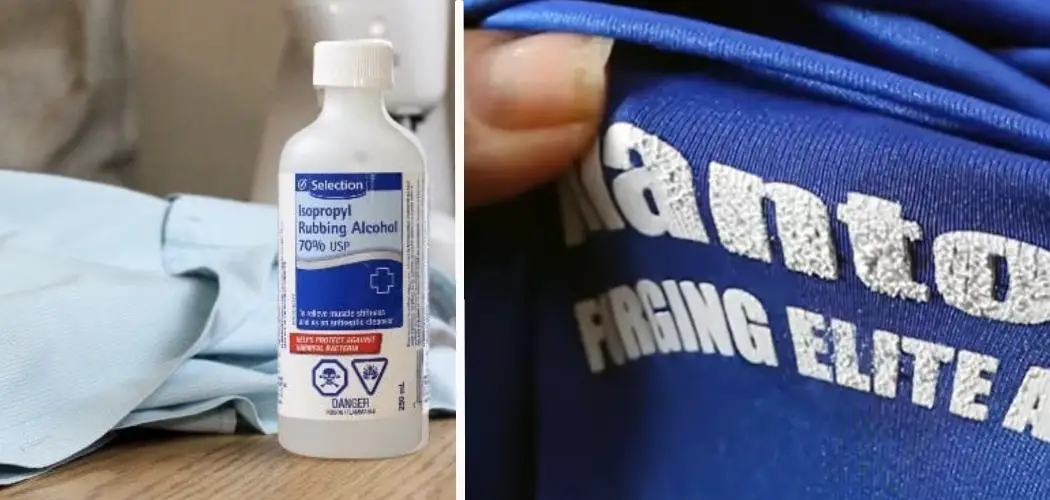Sublimation printing on polyester materials is a popular method that ensures vibrant, long-lasting designs. However, there may come a time when you wish to remove an old sublimation print from your polyester fabric, whether to update the design or to repurpose the material.
The process may seem daunting, but with careful steps, it’s entirely feasible. This blog post aims to guide you through the steps of removing sublimation print from polyester effectively and safely. Read on to learn more about how to remove sublimation print from polyester.
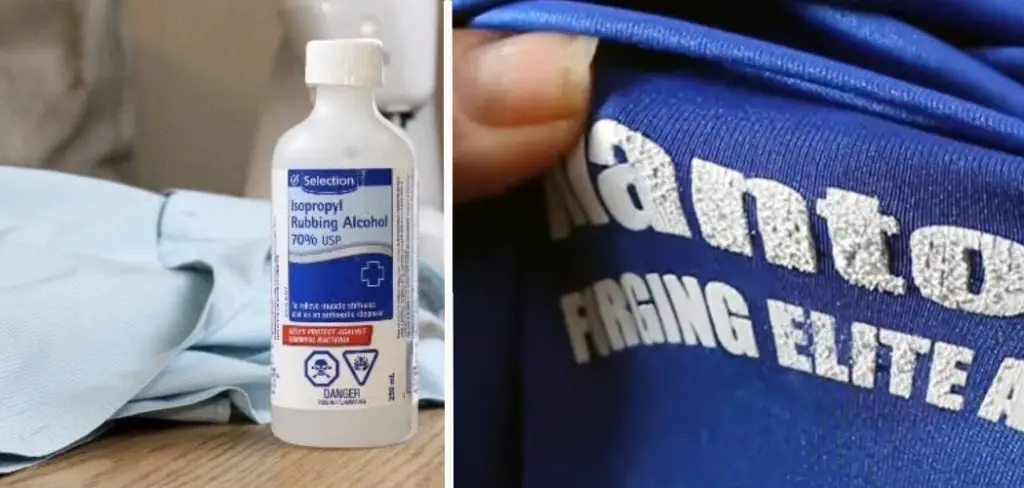
Can You Remove the Sublimation Print from The Polyester?
Polyester is a highly versatile fabric that has become increasingly popular in recent years for its durability and wrinkle resistance. However, one of the downsides of polyester fabric is that sublimation prints cannot be removed easily, which can be frustrating if the print is no longer wanted. While some people may be tempted to try and remove the sublimation print with harsh chemicals, this will likely damage the polyester fabric. Instead, the best option is to seek professional help from a fabric specialist who can assess the situation and advise on the best action. With their expertise, you may be able to remove the print without causing any damage to your polyester fabric.
Why Should You Remove Sublimation Print from Polyester?
Polyester is a popular fabric choice for many products due to its durability and versatility. However, if you have ever had a sublimation print on your polyester item, you must remove it. Although sublimation prints are a popular and cost-effective way to add designs to polyester, they can make a garment or item feel rough, making it uncomfortable to wear or use.
Removing a sublimation print from polyester lets you update the design to suit your current style and preferences better. Removing sublimation prints from polyester ensures that your clothing and other items feel as comfortable and unique as possible.
Understanding Sublimation Printing on Polyester
1. Brief Explanation of the Sublimation Printing Process
Sublimation printing is a technique that uses heat to transfer dye onto materials such as polyester. The process begins with a reverse image of the desired print being printed onto sublimation paper. This paper is then placed onto the polyester fabric, and heat is applied. The heat causes the sublimation dyes to convert from a solid to a gas without going through a liquid stage. This gas then permeates the polyester fibers, creating the print on the fabric.
2. The Permanence of Sublimation Prints on Polyester
Sublimation prints on polyester are known for their permanence. This is because the dye permeates the fibers of the polyester during printing, rather than simply sitting on top, as with other printing techniques. The dye becomes a part of the fabric itself, making the print extremely durable and resistant to fading or washing out. This quality is what makes sublimation prints desirable but also challenging to remove.
3. Reasons for Wanting to Remove Sublimation Prints
There are a number of reasons why you might want to remove sublimation prints from polyester. Perhaps the print has become outdated or no longer suits your style. It’s also possible that the print has become worn or faded over time, detracting from the overall aesthetics of the garment. Another reason could be that the print makes the fabric feel rough or uncomfortable against the skin. Whatever the reason, it’s important to know that due to the permanence of sublimation prints, professional help is often required to successfully remove them without damaging the polyester fabric.
Tools and Materials Needed for Removing Sublimation Prints from Polyester
- Fabric specialist or professional dry cleaner
- Mild detergent or stain remover (if recommended by fabric specialist)
- Soft-bristled brush
- Clean cloth/towel
- Iron (optional)
That’s it! With the right tools and materials, a sublimation print can be safely removed from polyester without causing any damage.
Preparing the Work Area
1. Setting Up a Clean and Organized Workspace
Before you begin the process of removing sublimation print from polyester, it’s important to prepare your workspace. This involves ensuring that the area is clean and well-lit and that all the necessary tools and materials are within easy reach. Having a well-organized workspace not only streamlines the process but also minimizes the risk of damage to the polyester fabric. Use a smooth, flat surface to lay out your polyester item and arrange your tools in order of their use to enhance efficiency.
2. Safety Precautions
Safety should always be your utmost priority when engaging in fabric treatment processes. Wear protective gear, such as gloves, to shield your hands from potential irritation from the cleaning solution. Also, it is advisable to work in a well-ventilated area to ensure that any fumes from the cleaning products don’t pose a health risk. Lastly, always follow the instructions provided by the fabric specialist or on the product labels to avoid causing unintentional damage to the polyester fabric.

How to Remove Sublimation Print from Polyester: The Ultimate Guide
1. Evaluate the Situation
Before you start removing sublimation print from polyester, you need to assess the condition of the fabric and the print. Is the print faded, cracked, or peeling off? Is the polyester stained, discolored, or damaged? Depending on the answers, you may need to adjust your approach or take extra care. For example, if the print is intact but want to remove it completely, you’ll have to use a more aggressive method than if it’s already falling apart.
2. Use Heat and Pressure
The easiest and quickest way to remove sublimation print from polyester is to use heat and pressure. You’ll need a heat press or a household iron, a protective sheet, and patience. Place the polyester garment or item face-down on the press or ironing board, cover it with the protective sheet (e.g., Teflon or parchment paper), and apply heat and pressure for a few seconds to a minute. Then, peel off the protective sheet and check if the print has transferred onto it. Repeat this process until all the sublimation ink has been removed. You may also use a damp cloth to rub off any residue.
3. Apply Chemicals
Suppose the heat and pressure method doesn’t work, or you must remove the sublimation print from a delicate or sensitive polyester fabric. In that case, you can use chemicals such as acetone, rubbing alcohol, or ammonia. However, note that these substances can damage or discolor the polyester, so test them on a hidden part before applying them to the whole item. Apply the chemical to a cotton pad or a soft cloth and rub it gently over the print, starting from the edges and moving toward the center. Don’t soak the polyester or apply too much pressure, which may spread the ink or cause the fabric to shrink or warp.
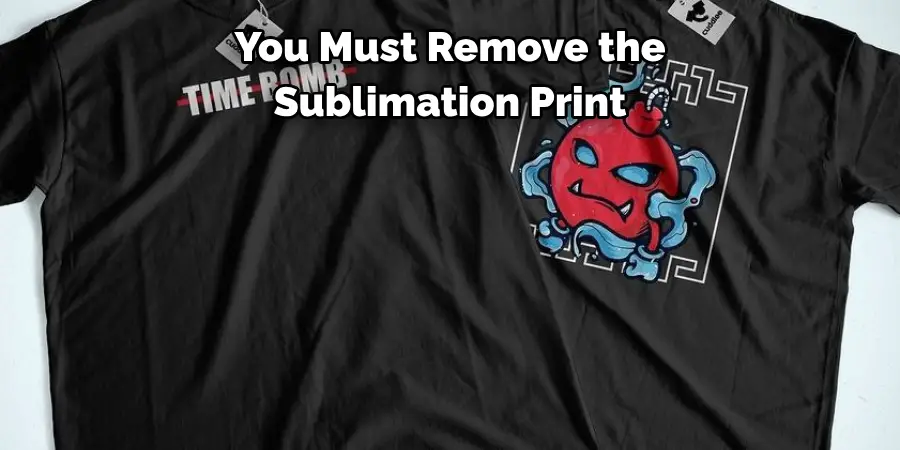
4. Try Sandblasting or Laser Etching
You can try sandblasting or laser etching if you want to remove sublimation print from a large area or on a polyester surface that can withstand more drastic measures, such as metal, glass, or ceramics. These methods involve removing the top layer of the polyester, thus erasing the ink. However, they require special equipment and skills, so it’s best to hire a professional or consult a specialist before attempting them. These methods can also create a new texture or design on the polyester, so keep that in mind.
5. Prevent Future Mistakes
Last but not least, after successfully removing the sublimation print from your polyester garment or item, you should learn from your mistake or avoid making it again. Check your design and printing settings before applying it to the polyester, and use high-quality sublimation inks, paper, and printers that match the polyester’s specifications. Also, store your polyester items in a dry and cool place, away from direct sunlight or heat sources, as these can cause the sublimation ink to deteriorate over time.
These are our best tips on how to remove sublimation print from polyester. Remember to be patient, take your time, and use the right method for the type of fabric or item you’re working with.
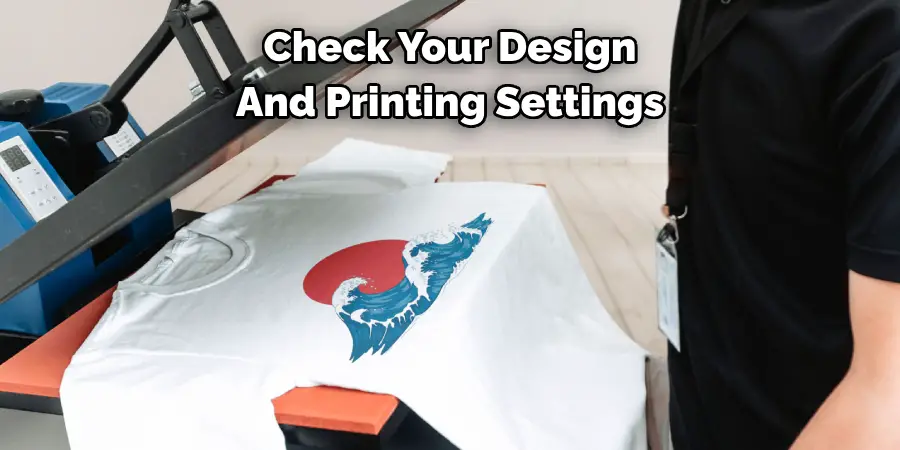
5 Considerations Things When You Need to Remove Sublimation Print from Polyester
1. The Polyester Material
When you are looking to remove a sublimation print from polyester, one of the first things you will need to consider is the type of polyester material the print is on. There are two different types of polyester materials: coated and uncoated. The coated polyester will be the easiest type of polyester to remove the print from, while the uncoated polyester will be more difficult.
2. The Dye Sublimation Ink
Another thing that you will need to consider when you are looking to remove a sublimation print from polyester is the type of dye sublimation ink used. There are two different types of inks: disperse and direct. Disperse inks are going to be easier to remove than direct inks.
3. The Type of Substrate
The type of substrate that the sublimation print was applied to will also affect how easy it is to remove the print. The three most common substrates are paper, fabric, and metal. Of these three, paper is going to be the easiest to remove the print from, while fabric and metal are going to be more difficult.
4. The Age of the Print
Another factor that you will need to consider when trying to remove a sublimation print from polyester is the age of the print. If the print is fresh, it will be easier to remove than if it is older. This is because as the print ages, it becomes more bonded with the polyester material.
5. The Printing Method
The printing method used to apply the sublimation print will also affect how easy it is to remove the print. The two most common printing methods are flatbed and rotary screen printing. Of these two, flatbed printing is going to be easier to remove the print from, while rotary screen printing is going to be more difficult.
By taking all of these factors into account, you can make sure that you can remove a sublimation print from polyester successfully. With the right knowledge and tools, you should be able to get the job done quickly and easily.
Benefits of Remove Sublimation Print from Polyester
Removing sublimation print from polyester fabric is a process that can yield many benefits. One of the most significant benefits is the ability to reuse the fabric for a different purpose or design. This can save you money and time usually spent on purchasing new materials. Additionally, removing the print from polyester can improve the fabric’s durability since repeated sublimation can weaken the fabric fibers. The removal process can also allow creative experimentation with different print designs without the fear of ruining the original fabric. Overall, removing sublimation print from polyester is a practical and cost-effective solution with much potential for creative exploration.
Some Common Mistakes People Make When Trying to Remove Sublimation Print from Polyester
It’s not uncommon to make mistakes when attempting to remove sublimation print from polyester; unfortunately, these mistakes can often worsen the situation. One of the biggest mistakes people make is using harsh chemicals or abrasives that can damage the fabric. Another common mistake is not testing a small, inconspicuous area before diving right in. This can lead to discoloration or even destruction of the entire garment. Make sure to use the proper temperature, pressure, and timing when removing the sublimation print. With a little patience and care, it is possible to successfully remove the sublimation print from polyester without causing any further damage.
Aftercare of Polyester Fabric Post Sublimation Print Removal
1. Cleaning and Caring for the Polyester Fabric
After successfully removing the sublimation print, it’s essential to properly clean and care for the polyester fabric to ensure its longevity. Begin by washing the fabric gently with warm water and mild detergent, avoiding the use of bleach or harsh chemicals that could potentially damage the fabric. Rinse thoroughly to remove all detergent residue. To dry, air-dry the fabric in a cool, shaded area, as direct sunlight can lead to fading or discoloration. If using a dryer, use a cool setting to prevent shrinking or warping.
2. Tips for Preserving the Fabric’s Integrity
Preserving the integrity of the polyester fabric post-removal requires mindful care. Avoid ironing the fabric directly; if necessary, use a cool iron with a press cloth. It’s also advisable to only use detergents specifically designed for synthetic fabrics, as conventional detergents can be too harsh. Furthermore, avoid the use of fabric softeners, as they can build up on the fabric and reduce its breathability. Lastly, always follow the specific care instructions on the fabric’s label to ensure its longevity.
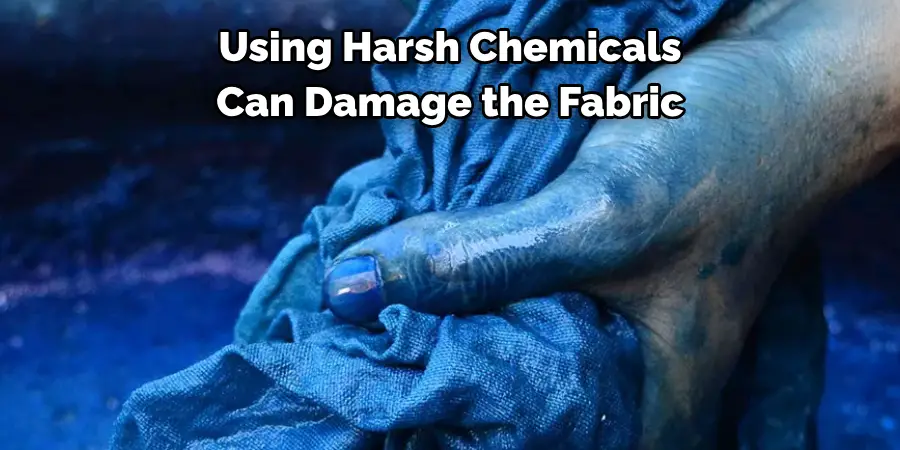
Frequently Asked Questions
1. Can I remove the sublimation print from any polyester material?
Not all polyester materials are suitable for sublimation print removal. The type and quality of the polyester can significantly influence the success of the removal process. It’s best to consult a professional if you’re unsure.
2. Can I try sublimation print removal at home?
Yes, some methods like washing and gently scrubbing can be attempted at home. However, for more complex methods like sandblasting or laser etching, professional help is advised.
3. Does the age of the print make a difference in its removal?
Yes, the age of the print can affect its removal. Fresh prints are typically easier to remove than older ones. As the print ages, it bonds more firmly with the polyester material, making it tougher to remove.
4. Can removing sublimation print damage my fabric?
If not done carefully, the print removal process can potentially damage your fabric. It’s crucial to use mild cleaning solutions and gentle methods to protect your fabric.
5. Can I reuse my polyester fabric after removing the sublimation print?
Yes, one of the benefits of removing sublimation print is that it allows you to reuse the fabric for a different purpose or design. However, the fabric’s condition after removal may depend on how the process was carried out.
Conclusion
Removing sublimation print from polyester can be tricky, but with the right tools and methods, it is possible to achieve a clean and smooth result. We hope that our ultimate guide has provided you with some useful insights and tips on how to approach this challenge and avoid damaging your polyester fabric. Remember to test any method on a small and inconspicuous part of the item before proceeding to the whole thing, and always handle the polyester with care. Thanks for reading our post about how to remove sublimation print from polyester.
You Can Check it Out to Wash Cooling Towels

